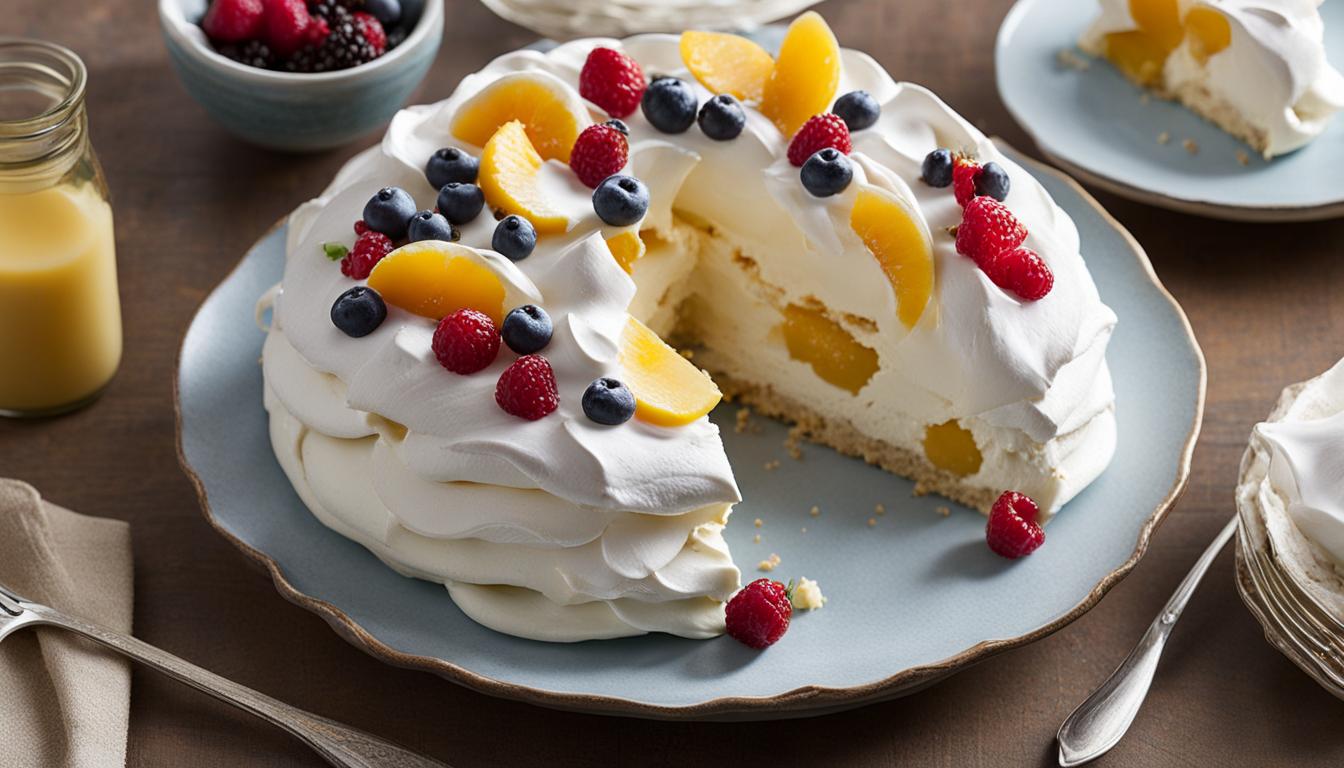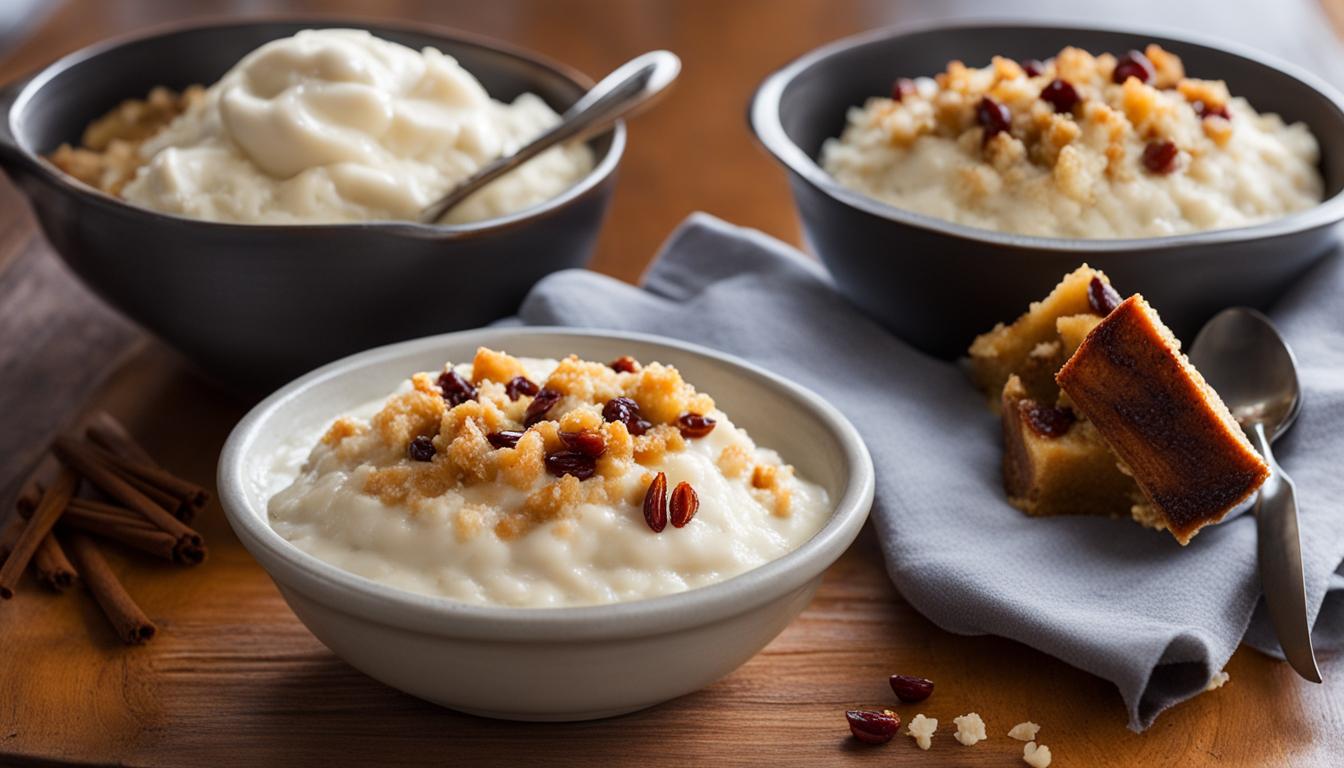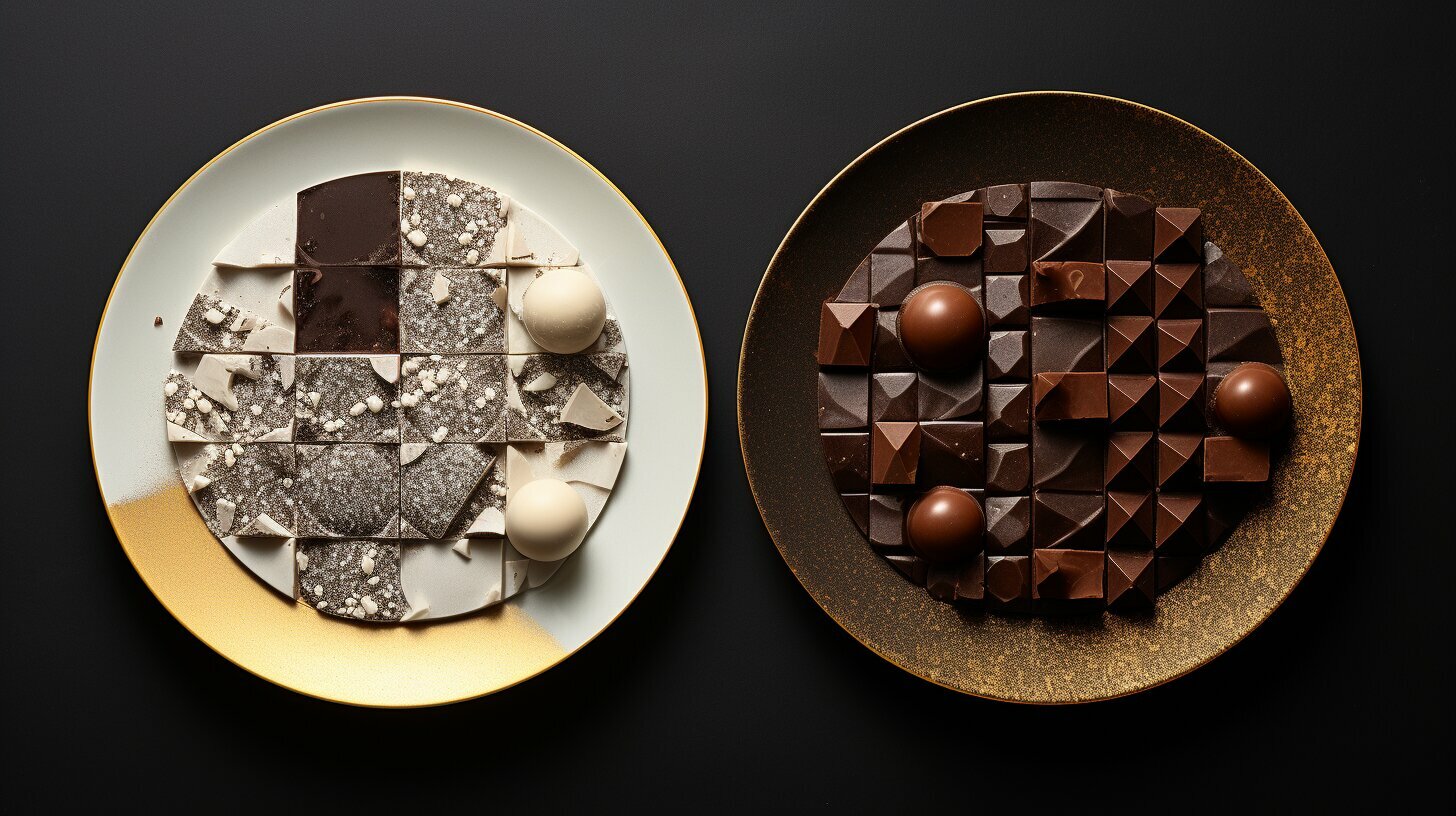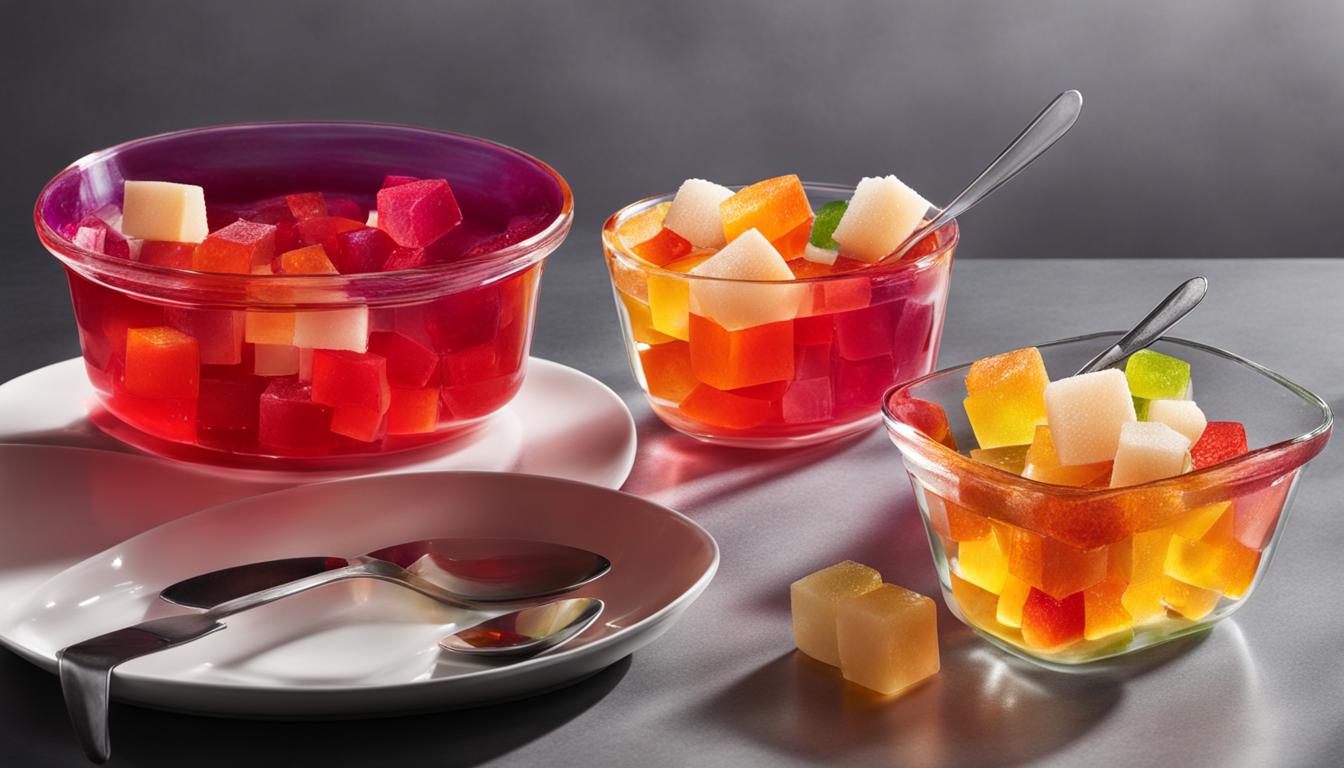Are you curious about the differences between pavlovas and meringues? These delicate and delicious desserts may seem similar, but they have distinct characteristics that set them apart. Let’s dive into what makes a pavlova different from a meringue.
Key Takeaways:
- Pavlovas have a soft and fluffy marshmallow-like center, while meringues have a crisp and dry texture throughout.
- Pavlovas are cooked at a higher temperature for a shorter time, while meringues are baked at a low heat for a long time.
- Pavlovas include cornflour to give the center a soft texture, while meringues do not.
- Pavlovas can be topped with various flavors and fruits, while meringues are usually enjoyed on their own.
- Pavlovas are versatile and can be shaped into different forms, making them ideal for special occasions.
The History of Pavlova and Meringue
The history of pavlova and meringue is as rich and diverse as the desserts themselves. While pavlova is named after the iconic Russian ballerina Anna Pavlova, meringue has a long-standing presence in European culinary traditions. Let’s explore the origins and creation of these delectable treats.
Pavlova, named after Anna Pavlova, was created during her tour of Australia and New Zealand in the 1920s. The exact origin of the dessert is a subject of debate between the two countries, with each claiming to be the birthplace of pavlova. Regardless of its true origin, pavlova has become a beloved dessert in both Australia and New Zealand and is often enjoyed during special occasions and holidays.
On the other hand, meringue has a much longer history that can be traced back to 17th century Europe. The exact origins of meringue are unclear, but it is believed to have been perfected by French pastry chefs during the 17th and 18th centuries. Meringue gained popularity across Europe throughout the centuries and eventually made its way to other parts of the world, including the Americas and Asia. Today, meringue is a staple in many dessert recipes, from pies and tarts to cookies and cakes.
The history of pavlova and meringue is intertwined with cultural and culinary traditions. While pavlova is closely associated with Australia and New Zealand, meringue has a global presence. Both desserts have captivated taste buds for generations, and their rich histories only add to their allure.
Table: Comparison of Pavlova and Meringue History
| Pavlova | Meringue |
|---|---|
| Named after Russian ballerina Anna Pavlova | Originated in 17th century Europe |
| Created during Anna Pavlova’s tour of Australia and New Zealand | Believed to have been perfected by French pastry chefs |
| Subject of debate between Australia and New Zealand | Gained popularity across Europe and later worldwide |
The history of pavlova and meringue is a testament to the culinary creativity and cultural significance of these desserts. Whether you indulge in a pavlova with its soft marshmallow center or savor a crisp meringue, these desserts have a place in our hearts and on our plates.
Texture and Mouthfeel Differences
Pavlova and meringue differ significantly in terms of texture and mouthfeel, offering unique sensory experiences. Understanding these differences allows dessert enthusiasts to appreciate the distinct qualities of each treat.
Pavlova has a delicate, crispy exterior that gives way to a soft and fluffy marshmallow-like interior. Its texture is light, airy, and melts in your mouth. This delightful combination creates a contrast between the crispness of the outer shell and the pillowy center. The incorporation of cornflour in pavlova recipes adds to its softness and contributes to its unique mouthfeel.
In contrast, meringue is characterized by a crisp and dry texture throughout. It offers a more brittle and crumbly mouthfeel. Meringues are baked at a low heat for an extended period, which results in the development of a crisp exterior and a drier interior. This texture creates a satisfying crunch and is particularly enjoyed by those who appreciate a firmer dessert.
Taste the Contrast
- Pavlova: Light, airy, and fluffy texture with a delicate crunch on the outside.
- Meringue: Crisp and dry texture with a satisfying crunch throughout.
The contrasting textures and mouthfeels of pavlova and meringue are a result of variations in the baking process and the specific ingredients used. These differences offer diverse experiences for dessert lovers, catering to different preferences and occasions.
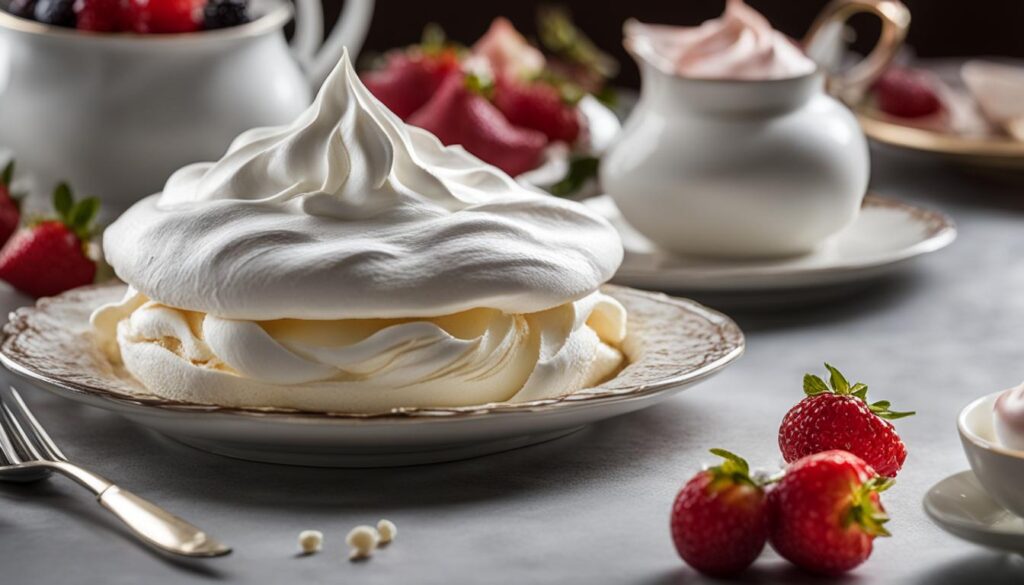
Table: Comparing Texture and Mouthfeel
| Pavlova | Meringue |
|---|---|
| Delicate, crispy exterior | Crisp and dry texture throughout |
| Soft and fluffy marshmallow-like interior | Brittle and crumbly mouthfeel |
| Light, airy, and melts in your mouth | Satisfying crunch |
Toppings and Flavors
When it comes to toppings and flavors, pavlovas and meringues offer unique and delicious options. Traditionally, pavlovas are topped with sweetened cream, such as chantilly cream, which adds a smooth and creamy element to the dessert. The cream is then piled high with an assortment of sliced fruits, creating a colorful and refreshing topping. The combination of the light, airy pavlova and the creamy, fruity toppings results in a harmonious blend of flavors and textures.
Meringues, on the other hand, are usually enjoyed on their own due to their dry and crisp texture. However, they can also be topped with various ingredients to enhance their flavor. For example, a dollop of lemon curd or a sprinkling of crushed nuts can add a burst of tanginess or a delightful crunch to the meringue. While pavlovas lend themselves well to a wide range of toppings, meringues shine in their simplicity, allowing the delicate flavors of the egg whites and sugar to take center stage.
Table: Toppings and Flavors for Pavlovas and Meringues
| Pavlovas | Meringues |
|---|---|
| Sweetened cream (chantilly cream) | Enjoyed on their own |
| Sliced fruits (strawberries, kiwi, mango, etc.) | Lemon curd |
| Chocolate ganache | Crushed nuts |
| Fruit compote |
As shown in the table above, pavlovas offer a greater variety of toppings, allowing for a more visually appealing and diverse range of flavors. Meringues, on the other hand, are traditionally enjoyed on their own, allowing the simplicity and purity of the dessert to shine. Whether you prefer the vibrant and fruity combination of pavlovas or the straightforward elegance of meringues, both desserts offer delightful options for those with a sweet tooth.
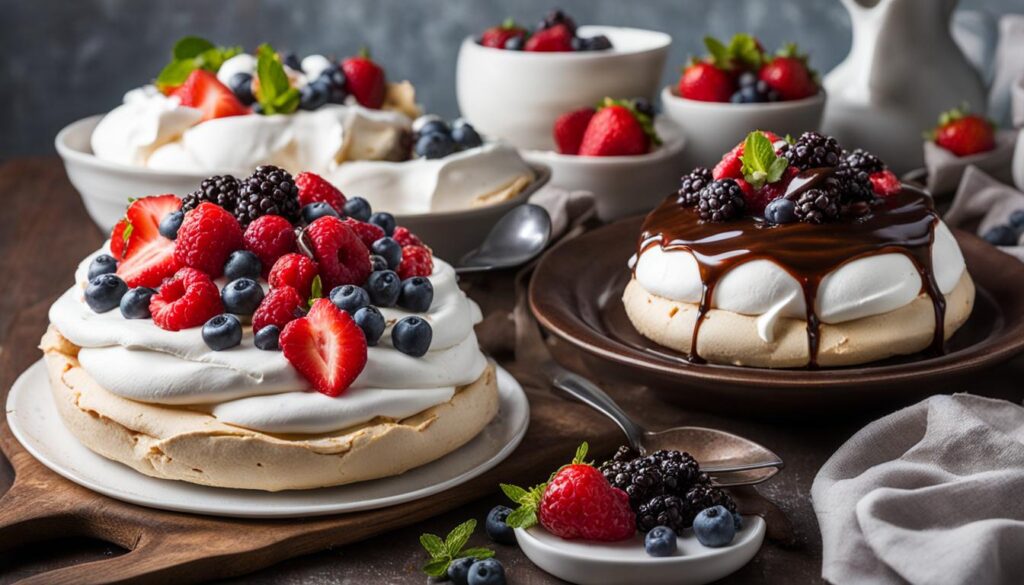
Versatility and Adaptability
Pavlovas and meringues are both delicious desserts that offer unique flavors and textures. However, when it comes to versatility and adaptability, pavlovas take the cake. The soft and airy nature of pavlovas allows them to be shaped into various forms, making them ideal for special occasions and celebrations throughout the year.
Whether you’re celebrating a birthday or hosting a holiday gathering, pavlovas can be molded into heart shapes, wreaths, or even a towering dessert centerpiece. The light and delicate texture of pavlovas lends itself well to creative presentations, making them visually appealing and impressive.
On the other hand, while meringues also offer a delightful taste, they are not as easily adapted in terms of shape and presentation. Meringues are usually enjoyed on their own due to their dry and crisp texture throughout. However, this doesn’t mean that meringues are any less versatile.
Meringues can be transformed into delightful cookies or used as a crust for pies. Their stability and crunchiness make them a perfect base for other desserts. So, while pavlovas shine in their ability to be molded into various shapes, meringues hold their own in terms of being adaptable in different culinary creations.
Table: Versatility and Adaptability Comparison
| Pavlovas | Meringues |
|---|---|
| Can be shaped into various forms | Best enjoyed on their own |
| Ideal for special occasions and celebrations | Can be used as a base for other desserts |
| Light and delicate texture | Dry and crisp texture throughout |
In conclusion
Pavlovas and meringues have their own unique qualities, with pavlovas being more versatile when it comes to shape and presentation. However, both desserts offer a delightful taste experience that can be enjoyed on different occasions. So, whether you’re in the mood for a beautifully shaped pavlova or a perfectly crispy meringue, these desserts are sure to satisfy your sweet tooth.
Conclusion
In conclusion, pavlovas and meringues may share some similarities as both desserts are made from whipped egg whites and sugar. However, the differences in baking techniques, ingredients, texture, and versatility set them apart.
Pavlovas have a soft marshmallow center, are quick to bake, and can be topped with various flavors and fruits. The delicate crispy exterior and fluffy interior create a light and airy texture that melts in your mouth, making pavlovas a delightful indulgence for any occasion.
On the other hand, meringues have a crisp and dry texture throughout and are enjoyed on their own. The low and slow baking process gives meringues their signature crunchy exterior and brittle mouthfeel. While they may lack the soft center of pavlovas, meringues offer a satisfying crunch and a simple, yet elegant, taste.
Understanding the differences between pavlovas and meringues allows for a deeper appreciation and enjoyment of these classic desserts. Whether you prefer the lusciousness of a pavlova or the crispness of a meringue, these treats offer a delightful experience with each bite.
FAQ
What are the main differences between a pavlova and a meringue?
Pavlova has a marshmallow-like center, while meringues have a crisp and dry texture throughout. Pavlovas are also cooked at a higher temperature for a shorter time and include cornflour to give the center a soft texture.
How did pavlova and meringue originate?
Pavlova was named after Russian ballerina Anna Pavlova during her tour in Australia and New Zealand. Meringue has a long history dating back to 17th century Europe.
What are the differences in texture and mouthfeel between pavlova and meringue?
Pavlova has a delicate crispy exterior with a soft and fluffy marshmallow-like interior, while meringue has a crisp and dry texture throughout with a more brittle and crumbly mouthfeel.
What toppings and flavors are typically used with pavlova and meringue?
Pavlovas are traditionally topped with sweetened cream and sliced fruits, while meringues are often enjoyed on their own due to their dry and crisp texture. Both desserts can be flavored with various ingredients.
How adaptable are pavlovas and meringues in terms of shape and presentation?
Pavlovas can be shaped into different forms, making them ideal for special occasions. Meringues, though not as easily adaptable, can still be enjoyed in various forms such as cookies or pie crusts.
What sets pavlovas and meringues apart?
Pavlovas have a soft marshmallow center, are quick to bake, and can be topped with various flavors and fruits. Meringues, on the other hand, have a crisp and dry texture throughout and are enjoyed on their own.
